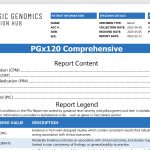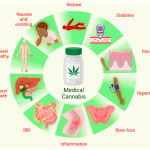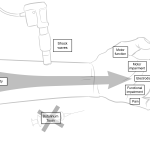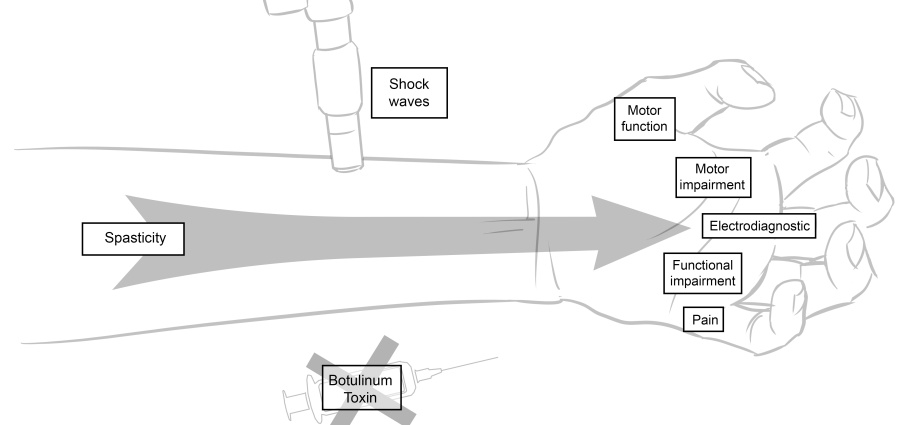Let’s be honest. The journey through depression is tough enough. But when you’ve tried multiple antidepressants and the heavy fog just won’t lift? That’s a special kind of exhausting. This is what clinicians call treatment-resistant depression (TRD), and for a long time, it felt like hitting a brick wall.
Well, the wall is starting to crumble. Science is finally catching up, offering new paths forward that are, frankly, revolutionary. We’re moving beyond the classic serotonin model into a whole new world of brain-based interventions. This isn’t just about new pills; it’s about fundamentally rethinking how we approach this complex condition.
Redefining the Battlefield: What is TRD, Really?
First, a quick clarification. Treatment-resistant depression isn’t a formal failure on your part. It’s typically defined as not responding adequately to at least two different antidepressant medications from different classes, taken for a sufficient duration at an appropriate dose. It’s surprisingly common, affecting up to 30% of people with major depressive disorder.
Think of it like this: if depression is a locked door, the first key (or medication) might not fit. The second key might fit but not turn. TRD is when you’ve tried several keys from the same basic keychain, and none of them work. The solution? We need a different keychain entirely. Or maybe a locksmith.
The New Wave of Pharmacological Options
Sure, new medications are still part of the arsenal, but they’re operating on entirely new principles. The old “chemical imbalance” theory is being supplemented by models focusing on neural circuits, inflammation, and neuroplasticity—the brain’s ability to change and heal.
Ketamine and Esketamine: The Rapid-Acting Revolution
This is the big one you’ve probably heard about. Ketamine, once known mainly as an anesthetic, has burst onto the scene as a powerful, fast-acting intervention for TRD. Its cousin, esketamine (brand name Spravato), is an FDA-approved nasal spray.
Here’s the deal: while traditional antidepressants can take weeks to work—if they work at all—ketamine and esketamine can produce relief within hours or days. The effect can be dramatic. It’s like a circuit breaker for a brain stuck in a depressive loop.
How does it work? It’s not about serotonin. It primarily targets a brain chemical called glutamate, which is like fertilizer for your neurons. It helps forge new connections and repair damaged ones, essentially encouraging the brain to rewire itself. The treatment is administered under strict medical supervision, often in a clinic setting.
Auvelity: A Novel Oral Approach
Another recent FDA approval, Auvelity, is a clever combination pill. It contains bupropion (a well-known antidepressant) and dextromethorphan (the cough suppressant). The bupropion’s main job, in this case, is to slow down the breakdown of dextromethorphan, allowing it to work on those same glutamate receptors that ketamine targets.
The result? A pill that offers a rapid-acting, glutamate-modulating effect, with some patients seeing improvement in just one week. It’s a sign that the rapid-acting philosophy is moving squarely into the mainstream.
Brain Stimulation Therapies: Going Straight to the Source
When medications fail, these therapies offer a more direct route. They’re like rebooting a frozen computer—sometimes you need to press the physical reset button.
Transcranial Magnetic Stimulation (TMS)
TMS is non-invasive and has become a workhorse for TRD. It uses magnetic pulses to stimulate nerve cells in a specific brain region involved in mood regulation—the left prefrontal cortex. You’re awake for the entire, relatively short procedure. It feels like a tapping sensation on your scalp.
The data is solid. For many, TMS provides significant relief where medications have not. It’s a commitment, typically requiring daily sessions for several weeks, but it’s outpatient and doesn’t have the systemic side effects of drugs.
Electroconvulsive Therapy (ECT): The Modern Makeover
Let’s clear the air. ECT is not the frightening procedure depicted in old movies. Modern ECT is safe, performed under general anesthesia, and is arguably the most effective treatment for severe, life-threatening TRD. It’s often a last resort, but for good reason—it works.
The main drawback, honestly, can be short-term memory loss around the time of treatment. But for someone trapped in the depths of TRD, the trade-off can be worth it.
Deep Brain Stimulation (DBS) and Vagus Nerve Stimulation (VNS)
These are the more invasive options, generally reserved for the most severe, chronic cases. DBS involves surgically implanting electrodes in the brain that deliver continuous electrical impulses. VNS, which is also implanted, works by stimulating the vagus nerve in the neck, which then sends signals to mood centers in the brain.
They represent a frontier—a way to directly modulate the brain’s faulty wiring when all else fails.
The Holistic Horizon: Psychedelics and Lifestyle Medicine
This is where things get really interesting. The future isn’t just about machines and molecules; it’s about experience and context.
Psychedelic-Assisted Psychotherapy
Psychedelics like psilocybin (from “magic mushrooms”) and MDMA are in late-stage clinical trials for TRD and PTSD. The early results are, to put it mildly, stunning. The therapy isn’t about taking a pill and waiting. It’s a guided, profound psychological experience.
The compound seems to “lubricate” the brain, making it more flexible and open to change. Paired with skilled therapy, this can allow patients to process deep-seated trauma and break out of rigid, negative thought patterns. It’s not a daily medication; it might be one or two sessions that catalyze a fundamental shift. The potential here is massive.
Lifestyle as Treatment Foundation
Meanwhile, we’re also learning that things like targeted exercise regimens, sleep hygiene protocols, and anti-inflammatory diets aren’t just “good for you”—they can be active components of a TRD treatment plan. Inflammation, for instance, is now strongly linked to depression. So, what you eat can directly impact your brain’s health. It’s not a cure-all, but it’s a powerful piece of the puzzle.
Navigating Your Path Forward
With all these options, where do you even start? It can feel overwhelming. The key is to work with a psychiatrist who is knowledgeable about these emerging therapies. Be your own advocate. Ask questions.
| Therapy Type | Key Feature | Consideration |
| Ketamine/Esketamine | Rapid action (hours/days) | Requires clinical administration; effects may not be permanent. |
| TMS | Non-invasive, well-tolerated | Daily time commitment for several weeks. |
| Psychedelic Therapy | Potentially transformative single sessions | Still largely investigational; requires therapeutic container. |
| Lifestyle Medicine | Foundational, empowers patient | Requires significant personal discipline and support. |
The landscape of hope is expanding, and it’s expanding fast. For anyone who has felt stranded by conventional treatments, these emerging therapies for treatment-resistant depression are more than just clinical options. They are signals—beacons showing that the conversation around depression is changing, becoming more nuanced, more personalized, and ultimately, more human.











